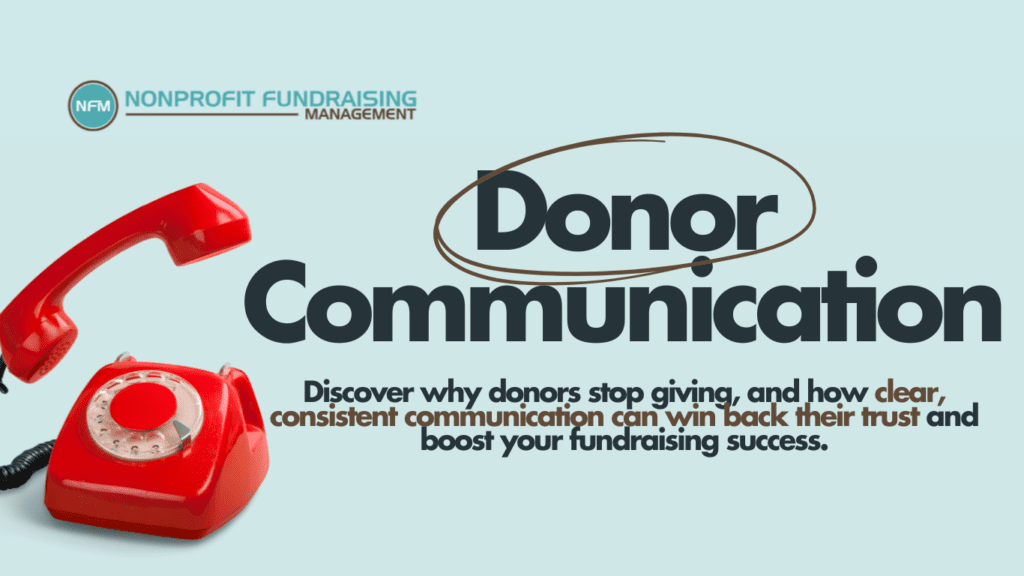
If Your Donors Don’t Trust You, They Won’t Stick Around
Imagine you’re supporting a cause you care about. You donate money but never hear where it went. No updates, no thank-you, no story about the lives you helped change. How would you feel?
Probably frustrated—or even cheated. You’d hesitate to give again, right?
The same thing happens to your donors. If they don’t know how their gifts are being used, trust erodes. And when trust disappears, donations dry up.
Here’s the truth: the problem isn’t always how much you’re asking for—it’s how you’re communicating.
The Problem: A Communication Breakdown
You pour your heart into your work. But if your congregation or supporters don’t see the impact of their giving, they start to feel disconnected. It’s not enough to say, “We need $50,000.”
Donors want to know three things:
- Where is my money going?
- Who is benefiting from my gift?
- Why does this matter right now?
If you’re not answering these questions consistently, you’re leaving money—and trust—on the table.
The Fix: Clear, Consistent, and Compelling Communication
To turn casual donors into long-term partners, you need to do three things well:
1. Be Clear About Your Finances
Transparency builds trust. Donors don’t need an accounting degree to understand your finances—they just need to see where their money is going in a simple, straightforward way.
Instead of saying, “We raised $100,000,” try this:
- 70% to community programs (meals served, scholarships provided).
- 20% to outreach (community events, volunteer training).
- 10% to administration (staff salaries, office costs).
When you break things down like this, donors see that their contributions are being stewarded wisely.
2. Tell Stories That Inspire Action
Numbers show what you do, but stories show why it matters.
Instead of saying, “We fed 500 families,” tell a story about one family whose life changed because of your work.
“A single mom of two walked into our food pantry last month after losing her job. She told us that if it weren’t for the support she received, she didn’t know how she’d get through the week. Now, she’s on her way to a new job, and we’re still here to support her.”
Stories like this connect donors emotionally to your mission. They see the impact of their gifts in real human terms—not just in spreadsheets.
3. Communicate Consistently
Think about your relationship with your donors like any friendship—if you only reach out when you need something, that relationship will feel transactional.
Instead, send regular updates:
- Share wins and challenges.
- Send personal thank-you messages.
- Highlight progress toward specific goals.
When donors feel included in your journey—not just when you’re fundraising—they become more invested in your success.
Real-Life Example: The Power of Transparency
A small church struggling to raise consistent funds started sending out monthly impact emails. Instead of vague requests, they shared updates on their food pantry:
- “This month, your donations provided meals to 100 families. Here’s the story of one of those families…”
The result? Donations increased by $50,000 in one year because donors felt connected to the work they were supporting.
Another nonprofit doubled their expected donations by sharing a heartfelt video of a mother who benefitted from their housing ministry. It wasn’t the numbers that moved people—it was the story.
Quick Quiz: How Strong Is Your Communication Strategy?
Ask yourself these questions:
- Do your donors know where their gifts are being used?
- When was the last time you shared a specific story of impact?
- Do you thank your donors consistently and personally?
If you’re unsure about any of these, it’s time to revisit your communication plan.
Want more actionable steps to strengthen your donor relationships and boost giving?
Watch our full video, where Paul Hosch shares practical tips to improve your communication strategy and build lasting donor trust.
